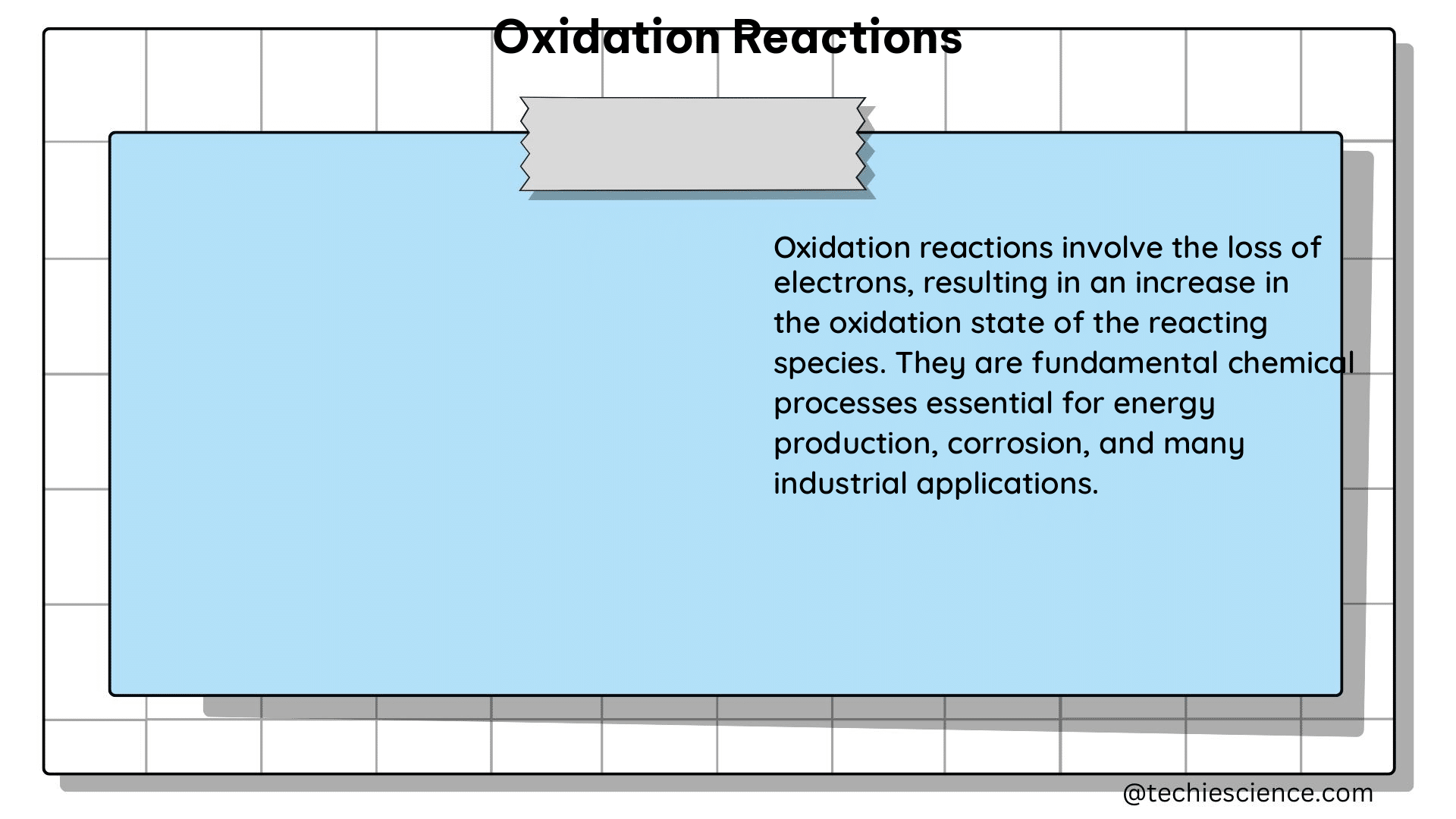Oxidation reactions are fundamental chemical processes that involve the loss of electrons by an element, leading to an increase in its oxidation state. These reactions are ubiquitous in various fields, from energy production to environmental chemistry, and understanding their underlying principles is crucial for chemists, engineers, and scientists alike. In this comprehensive guide, we will delve into the intricacies of oxidation reactions, exploring the concepts, equations, and practical applications that will empower you to navigate this essential aspect of chemistry.
Understanding Oxidation State and Electron Transfer
At the heart of oxidation reactions lies the concept of oxidation state, which represents the degree of oxidation of an element in a compound or ion. The oxidation state can be determined by applying a set of rules, such as the following:
- The oxidation state of a free element is zero.
- The sum of the oxidation states in a neutral compound is zero.
- The sum of the oxidation states in a polyatomic ion is equal to the charge of the ion.
The change in oxidation state during a reaction is directly related to the number of electrons transferred. This can be quantified by identifying the oxidation and reduction half-reactions, where the element being oxidized loses electrons, and the element being reduced gains electrons.
Balancing Redox Reactions

Balancing redox reactions is a crucial step in understanding and predicting the outcomes of these processes. The half-reaction method is a widely used technique that involves the following steps:
- Identify the elements that are undergoing oxidation and reduction.
- Write the unbalanced half-reactions for the oxidation and reduction processes.
- Balance the half-reactions by adjusting the number of electrons, protons, and water molecules as needed.
- Multiply the half-reactions by appropriate factors and add them together to obtain the balanced overall reaction.
This method ensures that the number of electrons lost in the oxidation half-reaction is equal to the number of electrons gained in the reduction half-reaction, satisfying the principle of charge conservation.
The Nernst Equation and Electrochemical Potential
The Nernst equation is a fundamental relationship that describes the relationship between the electrochemical potential (E) of a redox reaction and the concentrations of the reactants and products. The equation is expressed as:
E = E^0 – (RT/nF) ln(Q)
Where:
– E is the electrochemical potential of the reaction (in volts)
– E^0 is the standard reduction potential of the reaction (in volts)
– R is the universal gas constant (8.314 J/mol·K)
– T is the absolute temperature (in Kelvin)
– n is the number of electrons transferred in the reaction
– F is the Faraday constant (96,485 C/mol)
– Q is the reaction quotient, which is the ratio of the concentrations of the products to the reactants
The Nernst equation can be used to calculate the potential difference in a redox reaction, predict the direction of spontaneous electron transfer, and determine the concentrations of reactants and products.
Voltaic Cells and Electrochemical Series
Redox reactions are the foundation of voltaic cells, which are the basic components of batteries. In a voltaic cell, two different metals are submerged in solutions of their respective ions and connected by a conductive path and a salt bridge. The metal that more readily gives up electrons becomes the anode, while the other becomes the cathode. Electrons flow spontaneously from the anode to the cathode through the conductive path, providing an electrical current.
The activity series, also known as the reactivity series or the electrochemical series, is a list of elements arranged in order of their ability to lose electrons and undergo oxidation. This series can be used to predict the direction of redox reactions and the spontaneity of electron transfer between elements.
Practical Applications of Oxidation Reactions
Oxidation reactions have a wide range of practical applications in various fields, including:
- Energy Production: Redox reactions are the basis for the operation of batteries, fuel cells, and other electrochemical devices used in energy generation and storage.
- Environmental Chemistry: Oxidation processes play a crucial role in the treatment of wastewater, the removal of pollutants, and the remediation of contaminated sites.
- Organic Synthesis: Oxidation reactions are essential in the synthesis of various organic compounds, such as alcohols, aldehydes, and carboxylic acids.
- Biological Processes: Oxidation-reduction reactions are fundamental to many biological processes, such as cellular respiration, photosynthesis, and the functioning of enzymes.
- Analytical Chemistry: Redox titrations and electrochemical techniques, such as potentiometry and voltammetry, rely on the principles of oxidation-reduction reactions for quantitative analysis.
Conclusion
Oxidation reactions are a cornerstone of chemistry, with far-reaching implications in various scientific and technological domains. By mastering the concepts of oxidation state, electron transfer, and electrochemical principles, you will be equipped to tackle complex problems, design innovative solutions, and contribute to the advancement of scientific knowledge. This comprehensive guide has provided you with the necessary tools and insights to delve deeper into the fascinating world of oxidation reactions.
References
- Zumdahl, S. S., & Zumdahl, S. A. (2014). Chemistry (9th ed.). Cengage Learning.
- Chang, R., & Goldsby, K. A. (2013). Chemistry (11th ed.). McGraw-Hill Education.
- Atkins, P., & de Paula, J. (2014). Atkins’ Physical Chemistry (10th ed.). Oxford University Press.
- Silberberg, M. S., & Amateis, P. (2018). Chemistry: The Molecular Nature of Matter and Change (8th ed.). McGraw-Hill Education.
- Petrucci, R. H., Herring, F. G., Madura, J. D., & Bissonnette, C. (2017). General Chemistry: Principles and Modern Applications (11th ed.). Pearson.

The lambdageeks.com Core SME Team is a group of experienced subject matter experts from diverse scientific and technical fields including Physics, Chemistry, Technology,Electronics & Electrical Engineering, Automotive, Mechanical Engineering. Our team collaborates to create high-quality, well-researched articles on a wide range of science and technology topics for the lambdageeks.com website.
All Our Senior SME are having more than 7 Years of experience in the respective fields . They are either Working Industry Professionals or assocaited With different Universities. Refer Our Authors Page to get to know About our Core SMEs.